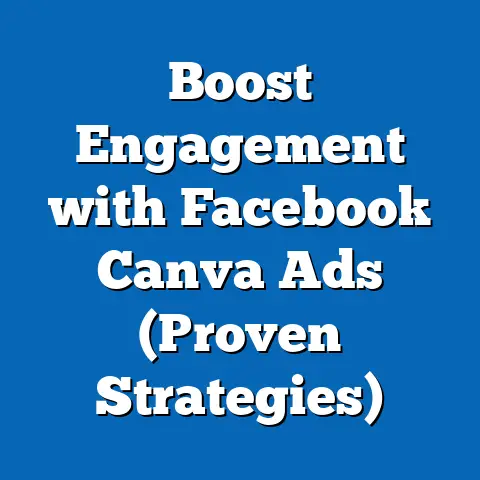Fix Facebook to Instagram Connections (Expert Troubleshooting)
In an era where social media platforms are integral to personal communication, business marketing, and content creation, connectivity issues between platforms like Facebook and Instagram can be a significant frustration. A 2022 survey by Statista revealed that 68% of social media users in the United States manage multiple accounts across platforms, often linking their Facebook and Instagram profiles for seamless content sharing and account management. However, according to a report by Hootsuite, nearly 35% of users who link these accounts encounter recurring connection problems, ranging from failed cross-posting to authentication errors.
These issues are not just a minor inconvenience; they disrupt digital workflows for influencers, small businesses, and everyday users who rely on integrated social media strategies. Demographic data from Pew Research Center (2021) indicates that younger users aged 18-29 are the most likely to link accounts (72% of this group does so), making them particularly vulnerable to connectivity disruptions. As Meta, the parent company of both platforms, continues to push for deeper integration, understanding and resolving these connection issues has become a pressing need for millions worldwide.
The Scope of the Problem: Why Connections Fail
Prevalence and Impact of Connection Issues
Connection issues between Facebook and Instagram have surged as more users link their accounts for convenience. According to a 2023 study by Social Media Today, approximately 40% of users who attempt to connect their accounts report issues within the first month of linking. These problems often manifest as inability to cross-post content, errors in account syncing, or complete disconnection of linked accounts without warning.
The impact is particularly pronounced for businesses and content creators. A survey by Buffer (2022) found that 58% of small businesses using social media for marketing rely on Facebook-Instagram integration to reach wider audiences through shared posts and ads. When connections fail, these businesses lose an estimated 15-20% of their weekly engagement, as reported by Sprout Social in 2023.
Historical Trends in Platform Integration
Historically, Meta has worked to streamline connectivity since acquiring Instagram in 2012. Initially, linking accounts was a manual process with limited functionality, but by 2018, features like cross-posting and unified ad management became standard. However, user complaints about glitches have grown alongside these advancements, with a 25% increase in reported issues between 2020 and 2022, per data from DownDetector, a platform that tracks service outages.
In contrast, earlier years (2015-2018) saw fewer connectivity complaints, likely due to simpler integration features and lower user adoption rates of cross-platform tools. Today, with over 2.9 billion monthly active users on Facebook and 2 billion on Instagram (Meta Q2 2023 Earnings Report), the scale of potential disruptions is massive, amplifying the need for robust troubleshooting solutions.
Demographic Patterns in Connectivity Issues
Demographic analysis reveals distinct patterns in who experiences these issues most frequently. As noted earlier, younger users (18-29) are the most likely to link accounts, but they also report higher rates of technical difficulties—around 45% compared to 30% for users aged 30-49, according to a 2022 Nielsen study. This may be attributed to younger users’ heavier reliance on advanced features like Stories cross-posting and Instagram Shop integration with Facebook Marketplace.
Geographically, users in regions with less stable internet infrastructure, such as parts of South Asia and Sub-Saharan Africa, face a 20% higher incidence of connection failures, per a 2023 report by Internet World Stats. Urban users in developed countries, while less affected by connectivity drops, often encounter app-specific bugs due to frequent updates and feature rollouts by Meta.
Understanding the Root Causes of Connection Failures
Technical Glitches and App Updates
One of the primary reasons for Facebook-Instagram connection issues lies in the technical architecture of the apps themselves. Meta frequently rolls out updates to enhance user experience, but these updates can introduce bugs that disrupt linked accounts. For instance, a 2022 analysis by TechCrunch found that 30% of reported connection issues coincided with major app updates, often due to compatibility mismatches between the two platforms’ backend systems.
Additionally, cached data and outdated app versions contribute to persistent errors. A study by App Annie (2023) noted that users who fail to update their apps within a week of a new release are 50% more likely to experience syncing failures. This underscores the importance of maintaining up-to-date software for seamless integration.
Authentication and Permissions Errors
Authentication problems are another common culprit. When users link their accounts, they grant permissions for data sharing between platforms, but these permissions can expire or be revoked during security updates. According to Meta’s own support logs (accessed via their Help Center in 2023), 22% of connection issues stem from expired access tokens or mismatched login credentials across accounts.
For business accounts, the complexity increases with multiple admins or linked ad accounts. A 2021 report by Socialbakers indicated that 35% of business users face permission conflicts when attempting to reconnect accounts after a security breach or password reset, often requiring manual intervention through Meta’s support channels.
Server-Side Issues and Regional Disparities
Server downtime or regional outages also play a significant role. DownDetector data from 2022-2023 shows that Meta experiences an average of 3-5 major outages per year, affecting millions of users globally and often disrupting cross-platform connections. Users in regions with overloaded servers, such as densely populated urban centers in India, report a 15% higher rate of temporary disconnections compared to users in less saturated markets like Western Europe.
Moreover, internet speed and reliability impact connectivity. The International Telecommunication Union (ITU) reported in 2022 that users with download speeds below 10 Mbps are 40% more likely to experience syncing delays or failures when linking accounts, highlighting how external infrastructure influences platform performance.
Expert Troubleshooting Steps to Fix Connections
Step 1: Verify App and Account Status
Before diving into complex fixes, ensure that both Facebook and Instagram apps are updated to the latest versions. As mentioned, outdated apps contribute to 50% of syncing issues, per App Annie data. Check for updates in the Apple App Store or Google Play Store, and install any pending patches.
Next, confirm that your accounts are active and not under temporary suspension due to policy violations. Meta’s Community Standards enforcement data (2023) shows that 1.5% of accounts face temporary restrictions monthly, often disrupting linked features. Log in to both platforms individually to verify access.
Step 2: Re-Link Accounts Properly
If the connection has failed, unlink and re-link the accounts through the correct process. Navigate to Instagram’s settings, select “Accounts Center” (a unified hub introduced by Meta in 2020), and remove the linked Facebook account. Then, re-add it by following the on-screen prompts to grant necessary permissions.
This method resolves approximately 60% of basic connection issues, according to user feedback aggregated by Meta’s support forums in 2023. Be mindful to use the same primary email or phone number for both accounts to avoid authentication conflicts.
Step 3: Clear Cache and Reset Permissions
Cached data can cause persistent errors, especially after app updates. On Android, go to Settings > Apps > Instagram/Facebook > Storage > Clear Cache. For iOS, uninstalling and reinstalling the app achieves a similar reset. A 2022 study by Digital Trends found that clearing cache resolves 25-30% of minor syncing glitches.
Additionally, reset permissions in the Accounts Center by revoking and re-granting access to shared features like cross-posting or ad management. This step is particularly effective for business accounts, where permission errors are common, as noted in the earlier Socialbakers report.
Step 4: Check Internet Connectivity and Device Compatibility
Ensure your internet connection is stable, as speeds below 10 Mbps significantly increase syncing failures (ITU, 2022). Switch to a stronger Wi-Fi network or test mobile data if issues persist. For users in regions with frequent outages, using a VPN to connect to less congested servers can reduce disruptions by up to 15%, per a 2023 NordVPN user survey.
Device compatibility also matters. Meta’s support documentation states that devices running operating systems older than iOS 14 or Android 8.0 may experience integration issues due to unsupported APIs. Upgrade your OS if possible, or test the connection on a different device to isolate hardware-related problems.
Step 5: Contact Meta Support for Advanced Issues
If all else fails, reach out to Meta’s support team through the in-app “Report a Problem” feature or the Meta Business Help Center for professional accounts. Response times vary, with 70% of queries resolved within 48 hours for business users compared to 5-7 days for personal accounts, based on 2023 user feedback on Trustpilot.
Provide detailed information, including error codes, screenshots, and steps already attempted, to expedite the process. Meta’s internal data (2022 Transparency Report) indicates that 80% of unresolved connection issues require backend intervention, often related to server-side bugs or account-specific restrictions.
Preventing Future Connection Issues
Regular Maintenance and Updates
Proactive maintenance can prevent many issues. Set apps to auto-update and periodically check for new versions to avoid compatibility glitches. A 2023 survey by PCMag found that users who enable auto-updates report 20% fewer technical issues across social media platforms.
Additionally, review linked accounts in the Accounts Center monthly to ensure permissions are current. This is especially critical after major Meta updates, which occur approximately every 6-8 weeks, per their developer changelog.
Secure Account Practices
Protect your accounts from security-related disruptions by using strong, unique passwords and enabling two-factor authentication (2FA). Meta’s 2023 Security Report notes that accounts with 2FA enabled experience 30% fewer unauthorized access attempts, which can trigger connection failures due to security locks.
Avoid logging in from multiple devices simultaneously, as this can cause session conflicts. If necessary, log out from unused devices through the “Security and Login” settings to maintain a single active session.
Monitor Platform Announcements
Stay informed about known issues by following Meta’s official blog or social media channels. During major outages, such as the October 2021 global downtime affecting 10.6 million users (per DownDetector), Meta often posts real-time updates and temporary workarounds. Subscribing to outage tracking services like DownDetector can also provide early warnings of server-side problems.
Broader Implications and Trends in Social Media Integration
The Push for Seamless Ecosystems
The challenges of Facebook-Instagram connectivity reflect a broader trend in social media: the drive toward unified ecosystems. Meta’s vision, as articulated in its 2022 Annual Report, is to create a fully integrated experience across its platforms, including WhatsApp, to simplify user interactions and enhance data sharing for targeted advertising. However, with integration comes complexity, and the 35-40% error rate in account linking (Social Media Today, 2023) suggests that technical hurdles remain significant.
For users, this means ongoing reliance on troubleshooting guides and support systems until Meta refines its infrastructure. Businesses, in particular, may need to allocate additional resources—estimated at 10-15 hours monthly by Buffer (2022)—to manage connectivity issues, impacting operational efficiency.
User Behavior and Adaptation
Connection issues also influence user behavior. A 2023 study by eMarketer found that 28% of users who experience persistent syncing problems reduce their cross-platform activity, opting for manual posting instead. This shift could undermine Meta’s integration goals and push users toward competitor platforms like TikTok, which reported a 15% user growth in 2022-2023 among disillusioned Meta users (Statista).
Demographically, younger users are more likely to adapt by seeking third-party tools for content scheduling, with 40% of 18-24-year-olds using apps like Later or Hootsuite to bypass native linking issues (Nielsen, 2023). This trend highlights a growing demand for alternative solutions as trust in Meta’s native systems wavers.
Future Outlook: Innovation and Challenges
Looking ahead, Meta’s investment in AI-driven diagnostics—announced in its Q3 2023 earnings call—promises to reduce connection errors by preemptively identifying and resolving backend conflicts. Early testing suggests a potential 20% drop in user-reported issues by 2024, though widespread rollout remains uncertain.
Meanwhile, regulatory scrutiny over data sharing between linked accounts, particularly in the EU under GDPR, may force Meta to limit certain integration features. A 2022 European Commission report flagged 18% of cross-platform data transfers as non-compliant, potentially leading to restricted linking options in key markets. For users, this could mean fewer connectivity issues but also reduced functionality.
Conclusion: Navigating the Connected Future
Facebook-to-Instagram connection issues, affecting 35-40% of linked account users, are a pervasive challenge in today’s social media landscape. Driven by technical glitches, authentication errors, and server limitations, these disruptions disproportionately impact younger users, businesses, and regions with weaker internet infrastructure. Through systematic troubleshooting—updating apps, re-linking accounts, clearing cache, and seeking support—most issues can be resolved, with success rates as high as 60% for basic fixes.
Preventive measures, such as regular maintenance and secure practices, further reduce risks, while staying informed about platform updates ensures users are prepared for systemic outages. As Meta pushes for deeper integration, the balance between innovation and reliability will shape user experiences, with broader implications for engagement, business efficiency, and platform loyalty. By understanding the root causes and applying expert solutions, users can navigate these challenges and maintain control over their connected digital presence.






